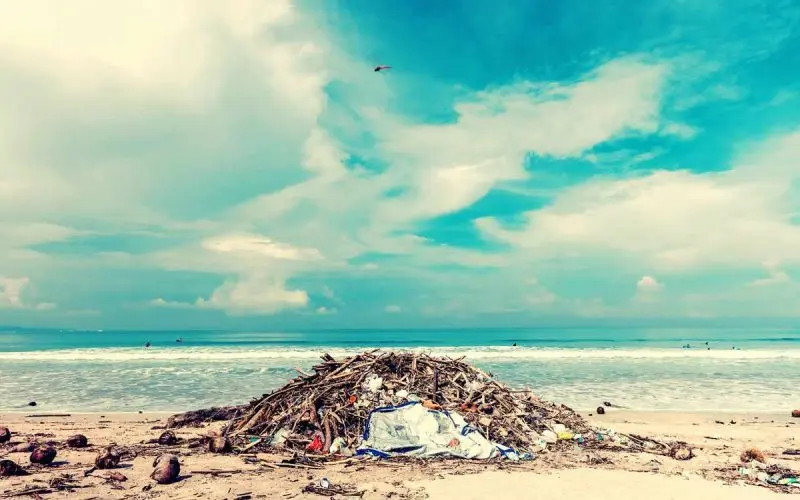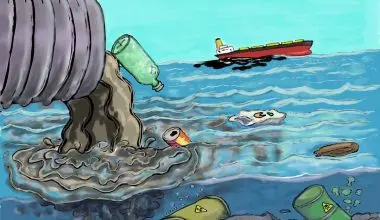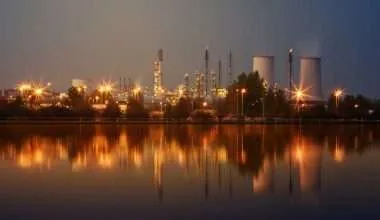[Updated: 27 July 2020]
What is Water Pollution?
Water Pollution is basically contamination of water in flowing in water bodies like rivers, lakes and oceans. Anything that makes water unfit for human or animal use is considered water pollution. Water pollution is usually human-caused.
Following are some facts on water pollution you should know about.
Read more: Water Pollution: Causes, Effects and Solutions
52 Amazing Facts on Water Pollution
Fact 1. The total volume of water in this world is thought to be about 1.335 billion cubic km or 325 million cubic miles – estimated by US geological survey.
-70% of the earth is covered by water.
-97% of the water in this world is saltwater that we can’t drink.
-Only 2.5% of the water in this world is fresh water, only 0.3% is drinkable.
Fact 2. Largest water Bodies in this world are the oceans.
Fact 3. 70% of the industrial waste is drained to water bodies and polluting water that we use.
Fact 4. 2.5 Billion People lack safe sanitation according to WHO (World Health Organization) as well as UNICEF (United Nations International Children’s Emergency Fund).
Fact 5. At least 2 Billion don’t have access to clean drinking water in the world! That includes 300 million in China as well!
Fact 6. 20% of the population in China uses groundwater as drinking water. It is badly polluted as it is loaded with carcinogens.
Fact 7. 40 Billion tons of plastic waste is dumped into the oceans annually
Fact 8. Due to the Tsunami in 2011 which involved a nuclear emergency made the Japanese government dump more than 10 million liters of radioactive water into the Pacific Ocean.
Fact 9. The 2011 tsunami in Japan caused the formation of a huge island as long as a 100 KM which is out there in the Pacific Ocean.
Fact 10. Each year, diseases caused by dirty drinking water lead to 15 million deaths under the age of 5.
Fact 11. The most polluted river in the world is The Ganges River in India, consisting of sewage, rotten plants and animals and all kinds of waste.
Fact 12. There’s a high amount of arsenic polluting the groundwater of Bangladesh.
Arsenic is toxic, acutely poisonous and a carcinogen causing severe forms of cancer. It is believed that 85% of groundwater in Bangladesh is contaminated.
Fact 13. In the United States, Over 71% of the rivers along with 51% of the lakes have become so polluted that they are unfit for fishing, swimming or marine life.
Fact 14. Contaminated drinking water kills 3000 children in the world every day! (UNICEF)
Fact 15. Many infectious diseases such as typhoid (which kills 200,000 annually) and cholera (killing 120,000 annually) are mainly caused by water pollution. The numbers are according to studies by WHO.
Fact 16. In total, 250 million die every year due to water pollution.
Fact 17. WHO reports suggest that more than 3 million children below the age of 5 in developing countries are killed by dirty drinking water and poor sanitation.
Fact 18. About 80% of the water pollution is caused by humans throwing garbage on the streets and into the waters. Use the dustbin please!
Fact 19. Food and Water claims that in 2025, around 3.5 billion would be facing water shortage problems. A major reason would be the water pollution at the highest rates now.
Fact 20. According to U.S EPA, 3.7 Trillion liters of sewage flowing from the homes, restaurants and factories are being drained into the U.S waters yearly.
Fact 21. Asia has the most polluted rivers of all the other parts of the world, mainly polluted by bacteria formed from human waste.
Fact 22. Plastic waste which is a major water pollutant is said to have caused the deaths of more than 100,000 species of marine life. Buy recycled plastic, to save marine life.
Fact 23. Canada has some of the most polluted rivers. The most polluted rivers of them are Idyllic Yamaska and the Ontario’s don in Quebec.
Fact 24. The polluted rivers have waste in them that grows bacteria, viruses and various forms of dangerous parasites and humans drinking that contaminated water could cause fatal diseases like cholera, typhoid, dysentery and guinea worm disease.
Fact 25. Water-related diseases kill 3.4 Million people each year.
Fact 26. Unfortunately, Almost 700 Million humans are drinking contaminated water worldwide.
Fact 27. Some of the man-made contaminants of water include heavy metals like Arsenic, radioactive waste, nutrients, sediments and even organic waste of humans.
Fact 28. More than a billion people or about 1/3 of rural populations defecates out in the open. This is known as open-defecation.
Fact 29. Open defecation leads to spread of diseases by vectors such as bees and also contaminates the water bodies. Open defecation is very common in India, especially near beaches.
Fact 30. Rate of extinction of Marine life is 5 times more than that of the animals on land.
Fact 31. 894 million people suffer from lack of improved water sources as reported by UNICEF and WHO.
Fact 32. Each year More than 30 Billion tons of urban waste is drained into the water bodies such as rivers, lakes and mainly oceans.
Fact 33. Leather factories and chemical industries are major contributors to water pollution, and the fact is their demand keeps on increasing.
Fact 34. More than 2 million tons of human waste is drained into the water every day.
Fact 35. UNESCO Has previously stated that 27% of the urban population doesn’t have piped water in their homes. So 73% of urban population has to rely on open water sources.
Fact 36. The 2010 explosion of an oil rig, Deepwater Horizon (of British Petroleum) led to the second biggest oil spill in the world.
The explosion resulted in deaths of 11 humans and more than 1000 animals including birds, turtles, mammals and other species of marine life.
It caused countless animals to be put on IUCN endangered species list.
Fact 37. Cruise ships are also said to be a major cause of Water pollution. They produce up to half a million gallons of sewage and release it into the waters directly.
Other than that, at least 40,000 gallons of oil is also spilled into the ocean by cruise ships.
Fact 38. Each year, 1.5 million metric tons of nitrogen loaded pollutants of the Mississippi River flow into the Gulf of Mexico that makes a ‘dead zone’ in the Gulf of Mexico about the size of New Jersey!
Fact 39. In 2003 UNESCO published World Water Development Report. It revealed that 2 million tons of agricultural, industrial and chemical waste along with huge amounts of sewage is drained into water bodies worldwide.
Fact 40. Third world countries discharge more than 80% of their waste into rivers, lakes and oceans.
Fact 41. 10% of the beaches in US fail to meet the federal standards for safe swimming.
Fact 42. Remains from Abandoned Mines have contaminated 45 percent of the sources of western waters in the US.
Fact 43. In the United States, there are 20,000 such hazardous waste landfills which would highly contaminate the ground water if they were to leak.
Fact 44. Yangtze river in China has amassed 25 billion tons of industrial waste each year as of now.
Fact 45. Over 70% of china’s rivers are unfit for human contact or consumption in any form.
Fact 46. Each year, more people die from unsafe water than from violence, including war.
Fact 47. Industrial waste of almost 500 metric tons is dumped into waters each year.
Fact 48. The most common member of chemical contaminant from fertilizers is nitrate, polluting the natural groundwater.
Fact 49. In 2000, it was reported that about 400 million tons of chemical products are manufactured each year.
Think of how much it must have increased now, especially after the industrial revolution.
Fact 50. The used water in our house can possibly find its way back to the tap if not disposed off properly.
Fact 51. More than 80 percent water used in homes is returned back into the rivers without proper treatment.
Fact 52. The contaminants in drinking water that are most likely to cause adverse impact on health are microorganisms, like bacteria and viruses as suggested by Water Quality Association.
So what can we do about all of this? Glad you asked.
We can use recycled plastic products, so that the plastic is in use rather than at the bottom of an ocean hurting the marine lives. A guide to ‘actual’ recycled products that we have found is being worked on.
Use as little water as possible.
Always drink filtered water; unless you live in these locations where world’s purest water is found!
Until then, Please save water when and where you can!







2 comments
Having read this I believed it was extremely enlightening. I appreciate you taking the time and effort to put this short article together. I once again find myself personally spending a significant amount of time both reading and commenting. But so what, it was still worthwhile!
You’re so cool! I do not believe I’ve truly read through something like this before.
So great to find someone with some original thoughts on this topic.
Really.. thanks for starting this up. This website is one thing
that’s needed on the web, someone with a little originality!